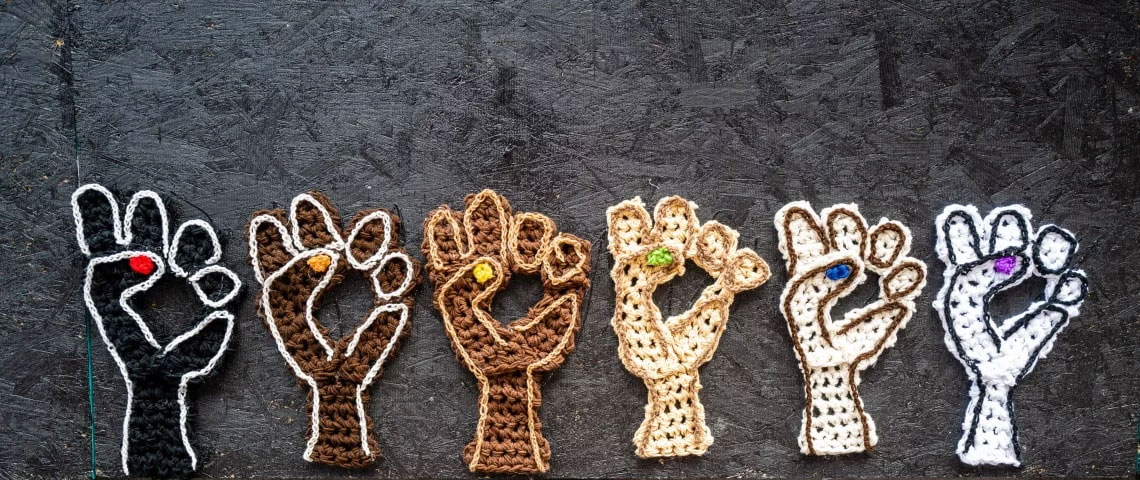Looking to create more diversity within your organization? An inclusive organizational culture is a must.
Diversity begins with inclusion

On May 25, 2020, bystanders filmed 46-year-old George Floyd lying face down and handcuffed, ultimately meeting his death at the hands of the police. This led to a wave of protests in the US, followed by #BlackLivesMatter demonstrations in various countries around the world. When an interviewer in Amsterdam asked a black man if he also experienced discrimination in his country, he said: “Of course. There are few communities in which you don’t attract some strange glances if you look “different.” And then, of course, there is institutional racism.”
Change is needed, but how?
Here at Effectory, we also feel the need to make rapid change in this area. We are aware that there is room for improvement, and the makeup of our employee base is one area for action. We see it as our moral and social duty to stand up for equality. We tend to hope that change will follow organically if we are sufficiently aware of the risk of institutional racism, but in reality that’s not the case. Plenty of determination and a well-thought-out strategy are essential if we are to make tangible progress towards inclusion and diversity. We want to effect change. But how can we do that?
Cultivating change instead of simply ticking boxes
The first step in combatting institutional racism is to actually acknowledge that it exists.
Vernā Myers really inspires me in this regard. Her core message is that inclusion is the necessary precursor to diversity: “It’s not about counting (how many people in minority groups you employ), it’s about cultivating (the right organizational culture).” So the challenge here goes beyond simple HR policy.
Inclusion is the opposite of discrimination and exclusion. It means breaking down all the walls that prevent disadvantaged groups from participating in organizations on an equal footing. To succeed, you must be aware of your own unconscious biases and be prepared to be truly open to what the other person has to say. Only then can you ensure that everyone has not only a place within your organization but also a voice.
Inclusion as a reflex
To create a state of inclusion, you need to encourage a climate in which people from all backgrounds feel not only respected and represented, but also comfortable and at home. One metaphor that expresses this idea well is “Diversity is being asked to the party. Inclusion is being asked to dance.”
We are striving to achieve an organizational culture in which inclusion is a reflex rather than an initiative. We want to create a culture that allows minority groups to have a sense of belonging but without feeling that they are being given special treatment.
Join our upcoming webinar!
Free webinars with Effectory’s HRLab series. Sign up and we’ll keep you updated on upcoming events.
RegisterUnconscious biases
As we strive to achieve inclusion and diversity, we are also coming to understand our own blind spots. You might think that your recruitment and promotion policies are based purely on personal qualities and results, but if you don’t really pay attention you may overlook a key issue: your own unconscious biases.
It is important that we recognize these unconscious biases, as our brains have evolved to make judgments and to react in a fraction of a second. The criteria you use to determine who is talented and who is not are often unconsciously influenced by cultural bias. These same unconscious biases could contribute to people from different subcultures deciding to leave an organization after a while because they don’t really feel welcome or are not given the scope to further their careers within the organization.
Give ambassadors a voice
Looking ahead, Effectory will be providing training both to the leadership team and to our recruiters to help them recognize their own unconscious biases. We will also be inviting ambassadors from minority groups to come and talk to us, and colleagues will be encouraged to share their stories. We want to give the floor to people with first-hand experience, be it in relation to gender, LGBTQ+, age, disability or anything else. This will help us to take tangible steps toward change and keep the conversation going. We are aware that it’s a long road, but we hope to make progress bit by bit.
How do you measure diversity?
Naturally, we are keen to monitor whether or not our actions are having an effect. But how do you measure diversity and inclusion? Your initial reaction might be to start counting, to keep a spreadsheet detailing the number of employees you have of a particular skin color, background, religion, disability or sexual orientation. However, I realized that this is exactly what I am trying to avoid — putting people in boxes.
And let’s not forget privacy laws, which rightly prohibit you from collecting and processing such information. This is why I have suggested to my colleagues that we take a different approach and survey our own employees to find out to what extent they feel our organizational culture is inclusive and diverse.
Turning results into action
One of the things we want to ask our own employees is whether they feel safe and confident enough to bring up issues relating to diversity and inclusion within their team. We also want to find out from them whether they think everyone within Effectory has equal access to opportunities, regardless of gender, sexual orientation, age or ethnicity.
If the answers reveal any particular areas of concern, we will conduct further investigations and then formulate a clear plan of action. Once some time has passed, we will survey the employees again and compare the new scores with our baseline. This will allow us to check whether we are really on the right track and give us scope to make adjustments as necessary.
Theme survey for organizations
Investigate the issues that stand in the way of your organization’s growth and success
view solutionKeep moving forward
Our goal is to make the world of work a better place by helping organizations to start a dialog with their employees. We want to become the world leader in employee listening. Diversity is an essential part of this growth: Research has shown that teams with a diverse makeup are more creative and better at solving problems. They think and act on the basis of more diverse perspectives and experiences, which allows them to respond more effectively to the needs of customers around the world. This awareness reinforces our commitment to creating an inclusive work environment and building and retaining a diverse workforce.
#BlackLivesMatter
I can’t help thinking about the BLM activist who felt supported by the large turnout on Dam Square. “This feels like the Netherlands at its best. A real melting pot, which makes me really happy. I already knew that was the case, but now you can really see it. Everything is intertwined. There are people with and without face coverings, people observing and not observing social distancing. The event might have happened 8000 kilometers away, but everyone feels connected to the people over in America, who are close to despair.” My thoughts mirror his. Every step counts. We will continue taking steps to make the working world a better place, and that includes looking inward at ourselves.
Series: Diversity begins with inclusion
Kim Christiaans, Inclusion & Diversity Lead at Effectory, has written a series of blogs describing how organizations can move toward creating a more diverse workforce and a more inclusive organizational culture. She talks about the I&D process within Effectory and explains how organizations can measure the progress of their I&D programs without making the mistake of thinking inside the box again.
